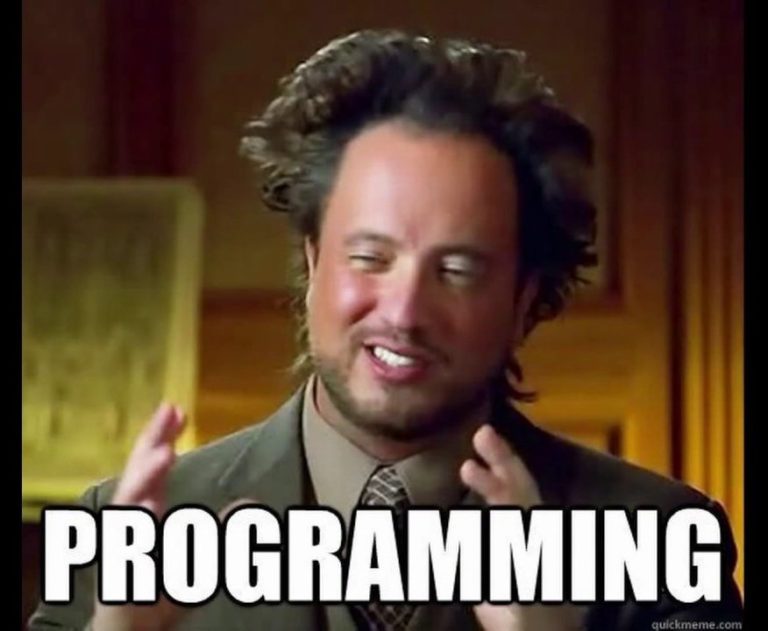Beginners in Programming: Top 6 Mistakes That Can Never Be Made
Every person is prone to making mistakes at the beginning of immersing in a new field. As a programmer, be assured that there would be countless error-checking.
A bracket, a loop, a semicolon, or all the things you thought were trivial before will now elude you on the screen when you are frantically looking for them.
On an encouraging note, despite all the infuriating details that come along with the activity, programming is indeed a fantastic journey. But to get there, first, you need to learn the right way. And hence, you would be better off avoiding the following mistakes.

Trying to Learn Too Much Too Fast
One of the most common mistakes that beginners make is attempting to learn different programming languages, techniques, and frameworks altogether.
Yes, it is very impressive to know Java, C++, and Python. However, if you are mentioning it in your resume as a beginner, make sure you have a good command over each of them.
Learning one language for two weeks, and switching over to another so you can list out all of them will only get you confused. If you are also a student majoring in some other field, the things can get even more complicated,
Luckily, the new world full of technological breakthroughs, apps, and innovations have something to offer – from professional academic writing platforms like https://essaypro.com/write-my-essay.html to time trackers apps like Pomodoro or many others. When it comes to programming, the application experience matters, not theoretical knowledge only.
Sticking to Passive Learning
Yes, you need to do write code yourself to enhance your knowledge. Watching dozens of tutorials or reading books about programming will not suffice if you are not strengthening the connections by actively practising what you have learned.
Let’s have an example of a video tutorial. It may make complete sense while you are watching, Yet when you try to reproduce anything, you may realize how complex this or that is in reality.
However, the point is not to simply repeat what the tutorial says, but to do programming exercises yourself. You need to understand why the particular code is working and how.
The best approach while practising is to change a few features, layouts, or variables and attempt to write the code for that yourself. This will give you a better comprehension of the language.
Trying to Accomplish Complex Coding Without Planning
As a beginner, you might assume that if you can write one complex code, you have become an expert in the language. However, complex programs are not only overwhelming. Trying to learn it all at once might not be rewarding for a beginner. Instead, plan a bit and divide it into simple approaches.
Bigger functions are harder to maintain, debug, and this can lead to unexpected problems later.
The golden rule of planning a programming project is to think, research, formulate, validate, and make modifications if required. Eventually, you will be doing it subconsciously without having to memorize each step.
Analyzing the problem will help you break the program into smaller functions. It would be more readable as well as easier to debug.
Keep in mind that complexity might be enticing to beat, but simplicity certainly trumps it.
Disregarding Code Quality
The most obvious giveaway of a beginner is their code format. Code quality will certainly improve as you gain more experience.
However, if you do not intentionally avoid formatting errors, it will soon reflect on your coding style. Improper indentations, inconsistent use of new lines, writing without focusing on readability are among the frequent beginners’ mistakes that make coding look sloppy.
By using linting and formatting tools, you can easily bring in some order into coding. Try to stick to 80 characters per line. Beyond this limit, it gets harder to read.
Others handling the code will face difficulty in not only understanding but also in maintaining the code. Aim for well-structured code that is clean and neat.
Not Looking for Alternative Approaches
Paraphrasing C.A.R. Hoare, there are two ways of developing a software program. The first is to write simple code with obviously no insufficiencies. And the other approach is to make it complicated enough that there are no obvious insufficiencies.
Which one would you prefer? The first solution that comes to your mind might strike as the obvious. But before you run with it right away, take some time to consider the potential failures and complexities that it could present.
There is no saying that the obvious solution would always be wrong. The point is to think of all the possible approaches to solve it in the most efficient way. At the same time, you should also know when to quit looking for alternate solutions.
Coding Without Encapsulation
Beginners often tend to overlook the significance of encapsulation. The aim of a programmer is coming up with solutions that last rather than providing a quick fix. Including encapsulation is not about using an OOP, but about making your code more efficient to maintain.
Creating new classes for each new conceptual unit will improve your code quality. It might be difficult for a beginner to identify which methods belong to which class or to be sure of which ones to add.
Over time, you will develop the instinct and will be able to do it automatically. However, do not skip encapsulation or postpone it for later stages. Try to do it as you are coding. This is the most serious mistake that you would want to avoid.

Final Words
Programming is one of the most coveted career options today. The fierce competition might push you to rush the learning process, and you will find it frustrating at times.
But patience is necessary if your goal is to achieve excellence. Do not overthink the mistakes you might make. Take leaps, breaks, learn, and you will definitely enjoy the journey of becoming a programmer.
Thank you for reading.
Here’re some more articles of the same interest:
— What Stats & Surveys Are Saying About Top Programming Languages In 2020







